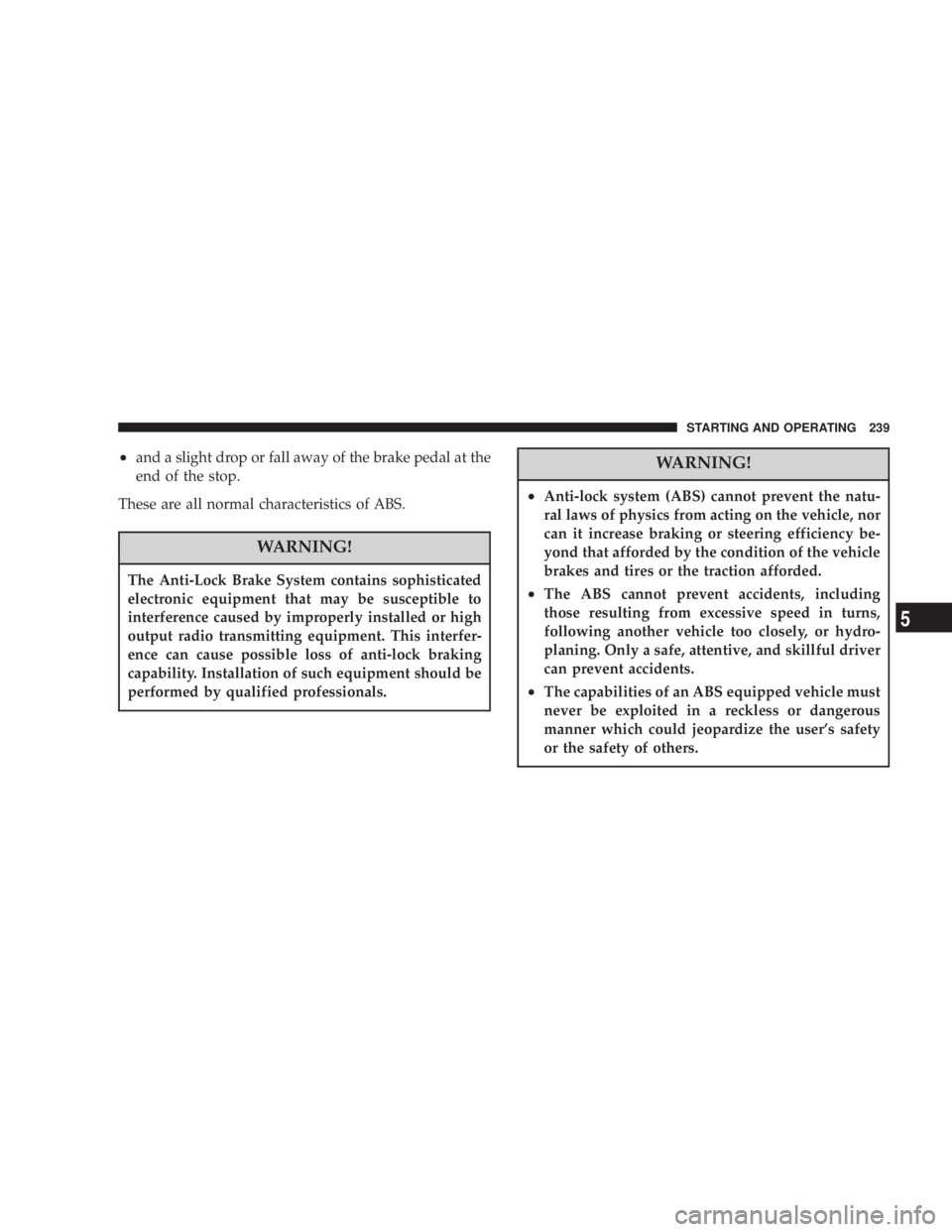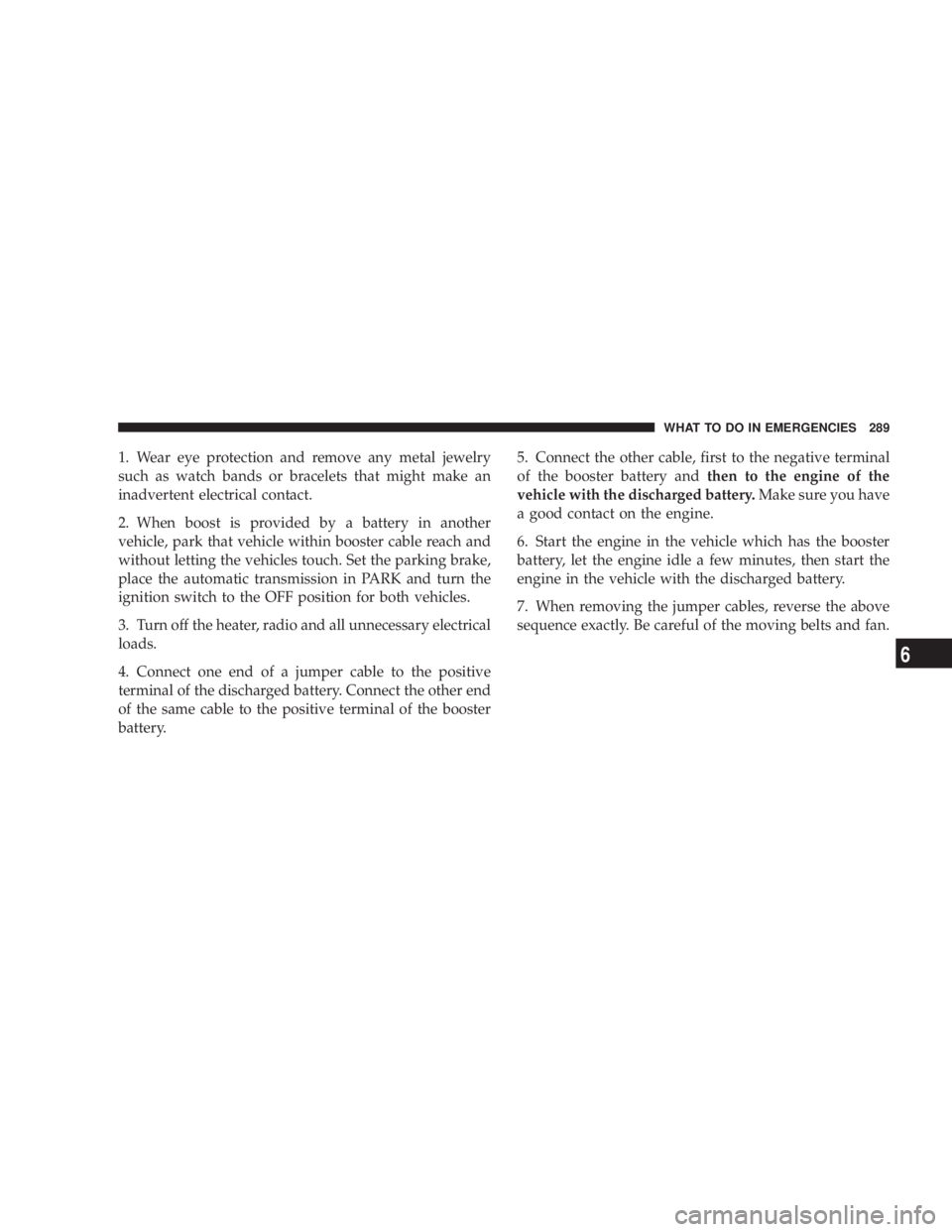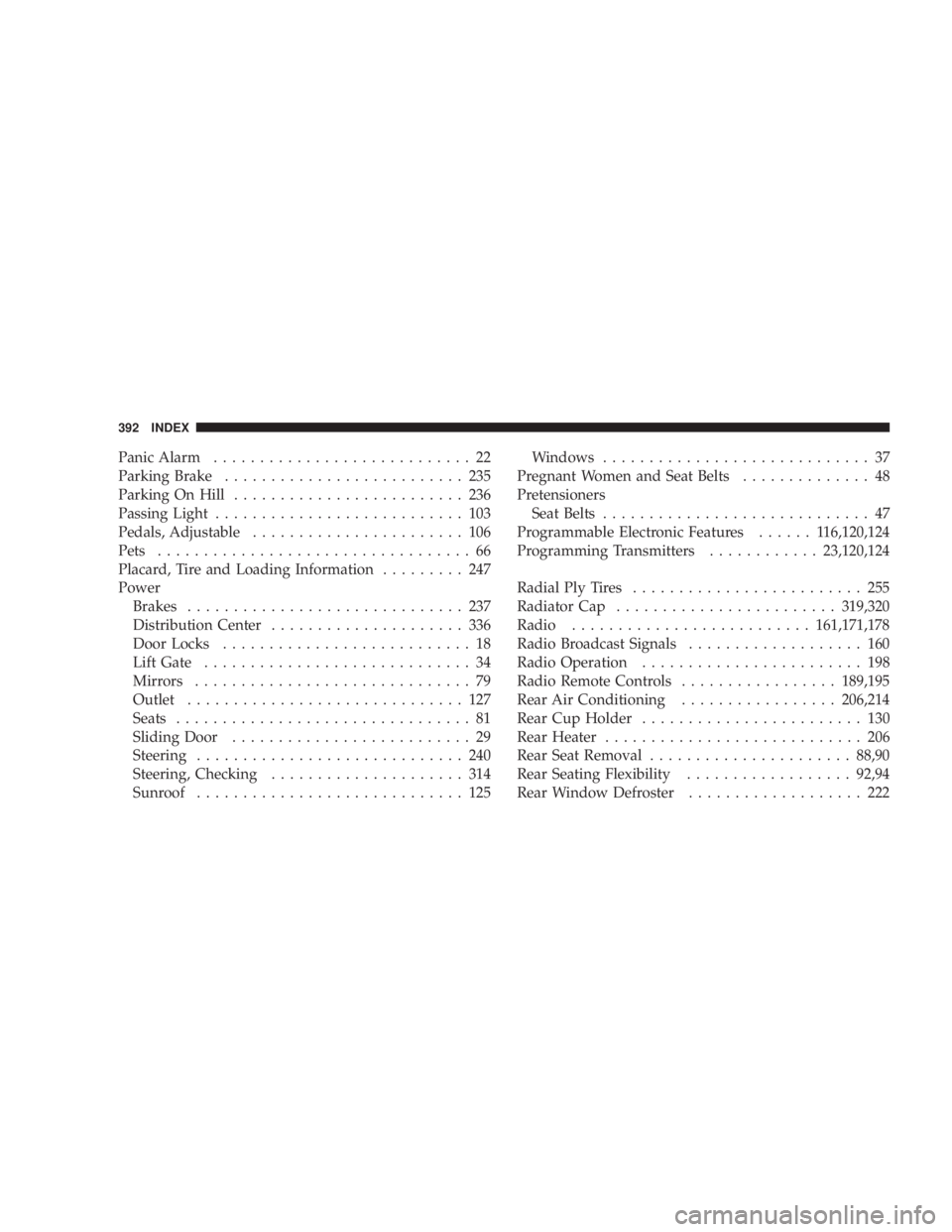Page 220 of 397
Vehicles equipped with Automatic Temperature Control,
the controls for these features are located in the middle of
the instrument panel above the radio. Rear Wiper Operation Ð Automatic Temperature
Control Only
Press this button to have the rear wiper have a
continuous wipe. When the ignition switch is in the
ON/RUN position, the rear wiper switch position as well
as an indicator light will show that the wiper is ON.
Intermittent Rear Wiper Operation Ð Automatic
Temperature Control Only
When this button is pressed and the ignition
switch is in the ON position, the rear wiper will
operate at a fixed interval of about 8 seconds. As
vehicle speed increases, the time delay will shorten. The
switch position as well as an indicator light will show
when the wiper is ON.220 UNDERSTANDING YOUR INSTRUMENT PANEL
Page 239 of 397

² and a slight drop or fall away of the brake pedal at the
end of the stop.
These are all normal characteristics of ABS.
WARNING!The Anti-Lock Brake System contains sophisticated
electronic equipment that may be susceptible to
interference caused by improperly installed or high
output radio transmitting equipment. This interfer-
ence can cause possible loss of anti-lock braking
capability. Installation of such equipment should be
performed by qualified professionals. WARNING!² Anti-lock system (ABS) cannot prevent the natu-
ral laws of physics from acting on the vehicle, nor
can it increase braking or steering efficiency be-
yond that afforded by the condition of the vehicle
brakes and tires or the traction afforded.
² The ABS cannot prevent accidents, including
those resulting from excessive speed in turns,
following another vehicle too closely, or hydro-
planing. Only a safe, attentive, and skillful driver
can prevent accidents.
² The capabilities of an ABS equipped vehicle must
never be exploited in a reckless or dangerous
manner which could jeopardize the user's safety
or the safety of others. STARTING AND OPERATING 239
5
Page 260 of 397

are significantly underinflated. It is particularly impor-
tant, therefore, for you to check the tire pressure in all of
your tires regularly and maintain proper pressure.
1,2,3, OR 4 TIRE(S) LOW PRESSURE
Low tire pressure levels of 28 psi [1.9 bars] (193 kPa) or
less detected in one or more tires.
Inspect all tires for proper inflation pressure, once proper
tire pressure has been set the TPM system warning will
reset automatically once ignition switch has been turned
ON.
1,2,3, OR 4 TIRE(S) HIGH PRESSURE
High tire pressure levels of 48 psi [3.3 bars] (330 kPa) or
more detected in one or more tires.
Inspect all tires for proper inflation pressure, once proper
tire pressure has been set the TPM system warning will
reset automatically once ignition switch has been turned
ON. SERVICE TIRE PRESSURE SYSTEM/SEE
OWNER'S MANUAL
The Tire Pressure Monitor System (TPM) system requires
service.
See your authorized dealer for service.
TIRE PRESSURE UNAVAILABLE
The TPM system function is temporarily unavailable due
to external electromagnetic interference, such as portable
electronic devices, or near by radio or TV towers.
Move the vehicle to an area free from radio, TV antennas
and transmitting towers or disconnect any portable elec-
tronic devices, once the external interference is removed
the TPM system will resume normal operation and ªTIRE
PRESSURE NOW AVAILABLEº will appear in the over-
head console display.260 STARTING AND OPERATING
Page 280 of 397
HAZARD WARNING FLASHER
The hazard flasher switch is located in the center of the
instrument panel above the radio.
To engage the Hazard Warning Flashers, depress the
switch on the instrument panel. When the Hazard Warn-
ing Switch is activated, all directional turn signals will flash on and off to warn oncoming traffic of an emer-
gency. Push the switch a second time to turn off the
flashers.
This is an emergency warning system and should not be
used when the vehicle is in motion. Use it when your
vehicle is disabled and is creating a safety hazard for
other motorists.
When you must leave the vehicle to seek assistance, the
Hazard Warning Flashers will continue to operate even
though the ignition switch is OFF.
NOTE: With extended use, the Hazard Warning Flash-
ers may wear down your battery.280 WHAT TO DO IN EMERGENCIES
Page 289 of 397

1. Wear eye protection and remove any metal jewelry
such as watch bands or bracelets that might make an
inadvertent electrical contact.
2. When boost is provided by a battery in another
vehicle, park that vehicle within booster cable reach and
without letting the vehicles touch. Set the parking brake,
place the automatic transmission in PARK and turn the
ignition switch to the OFF position for both vehicles.
3. Turn off the heater, radio and all unnecessary electrical
loads.
4. Connect one end of a jumper cable to the positive
terminal of the discharged battery. Connect the other end
of the same cable to the positive terminal of the booster
battery. 5. Connect the other cable, first to the negative terminal
of the booster battery and then to the engine of the
vehicle with the discharged battery. Make sure you have
a good contact on the engine.
6. Start the engine in the vehicle which has the booster
battery, let the engine idle a few minutes, then start the
engine in the vehicle with the discharged battery.
7. When removing the jumper cables, reverse the above
sequence exactly. Be careful of the moving belts and fan. WHAT TO DO IN EMERGENCIES 289
6
Page 392 of 397

Panic Alarm ............................ 22
Parking Brake .......................... 235
Parking On Hill ......................... 236
Passing Light ........................... 103
Pedals, Adjustable ....................... 106
Pets .................................. 66
Placard, Tire and Loading Information ......... 247
Power
Brakes .............................. 237
Distribution Center ..................... 336
Door Locks ........................... 18
Lift Gate ............................. 34
Mirrors .............................. 79
Outlet .............................. 127
Seats ................................ 81
Sliding Door .......................... 29
Steering ............................. 240
Steering, Checking ..................... 314
Sunroof ............................. 125 Windows ............................. 37
Pregnant Women and Seat Belts .............. 48
Pretensioners
Seat Belts ............................. 47
Programmable Electronic Features ...... 1 16,120,124
Programming Transmitters ............ 23,120,124
Radial Ply Tires ......................... 255
Radiator Cap ........................ 319,320
Radio .......................... 161,171,178
Radio Broadcast Signals ................... 160
Radio Operation ........................ 198
Radio Remote Controls ................. 189,195
Rear Air Conditioning ................. 206,214
Rear Cup Holder ........................ 130
Rear Heater ............................ 206
Rear Seat Removal ...................... 88,90
Rear Seating Flexibility .................. 92,94
Rear Window Defroster ................... 222392 INDEX